What were the conditions like on the Trans-Siberian railway for women in the 1930s? Which American city was most like Melbourne in the 50s? And does anyone know what to wear to dinner when traveling first-class by ship?
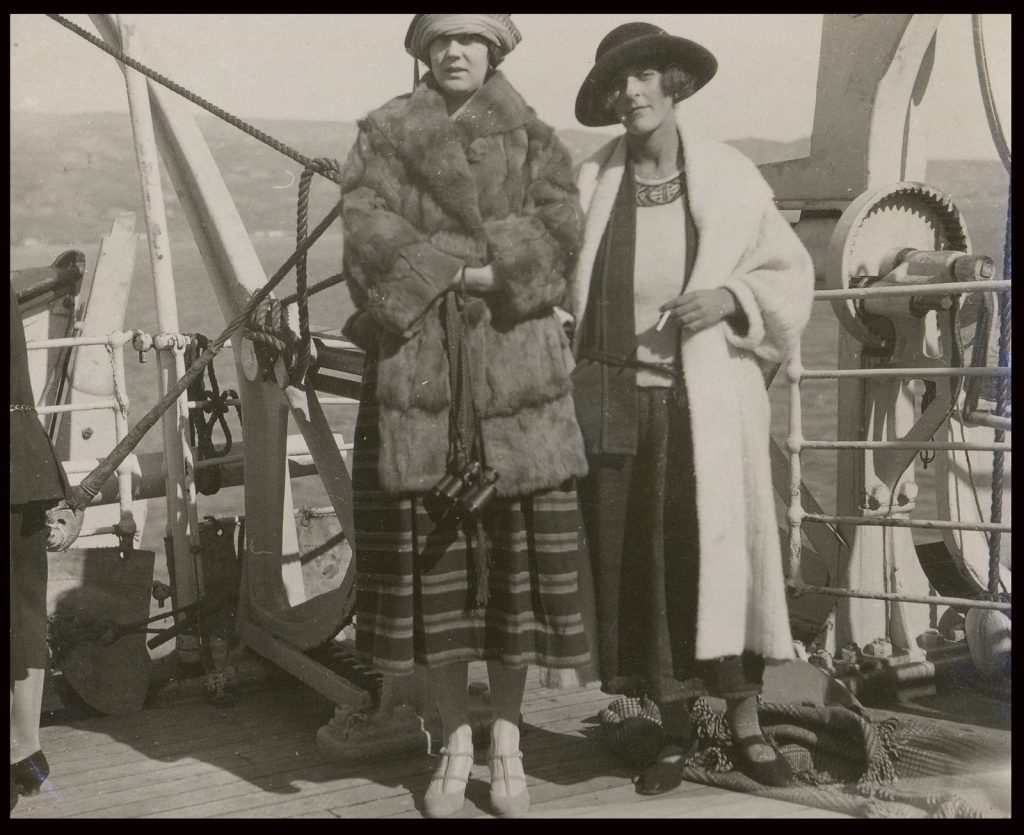
State Library Victoria members can access hundreds of databases from home (if your home is in Victoria). That’s millions of articles, magazines, archives, ebooks, videos, songs, audiobooks and more, available through the catalogue anytime. We’re taking a closer look at new and/or interesting databases as well as hidden gems from our collections. Read on for top picks and tips from Librarians.
Not a member yet? Sign up online first and reward your curiosity.
Today we’re looking at the Travel Writing, Spectacle and World History database by Adam Matthew.
What makes this database so great?
Travel writing, but from a uniquely female perspective. This database brings together over 150 years of women’s experiences traveling the globe. A range of locations, transportation, travel motivations, ages and backgrounds are covered in both written and visual material. Expect to see photos, sketchbooks, guidebooks, diaries, postcards, and lots more. Learn about the history of the world and travel from a woman’s point of view. This database is fantastic for anyone interested in the history of travel writing, tourism, ethnography, and women’s narratives.
Some highlights
Travel diaries
The database features a large collection of travel diaries from women across many backgrounds, describing a wide range of experiences.
This beautiful travel diary of American, Catherine Shouse, has been water damaged to the point where it is almost unreadable, however the collaged images, maps and ephemeral items that she has glued inside means that it is still a wonderful visual portrait of her time in the West Indies in the 1960s. The below page recalls the time spent in Willemstad, Curaçao using both text and beautiful imagery.
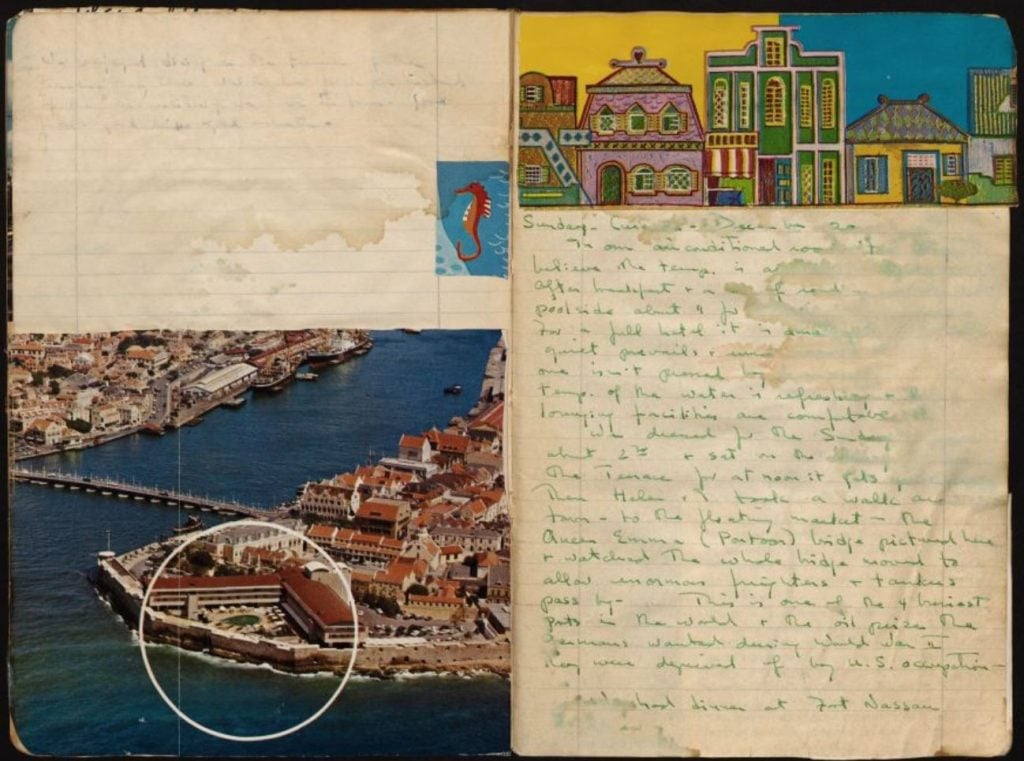
© The Schlesinger Library at the Radcliffe Institute for Advanced Study, Harvard University
Here we have a page from the 1951-1952 travel scrapbook of Ida Maude Cannon, a pioneering social worker and nurse from Wisconsin, and an avid traveler. The scrapbook includes photographs, postcards, and maps from the world trip taken by Ida and her family, taking in locations such as Australia, New Zealand, Fiji, Indonesia, India and the Middle East. This page contains postcards of stunning landscape paintings of northern Australia by Australian artists Hans Heysen, Howard Ashton, and Arthur Streeton.
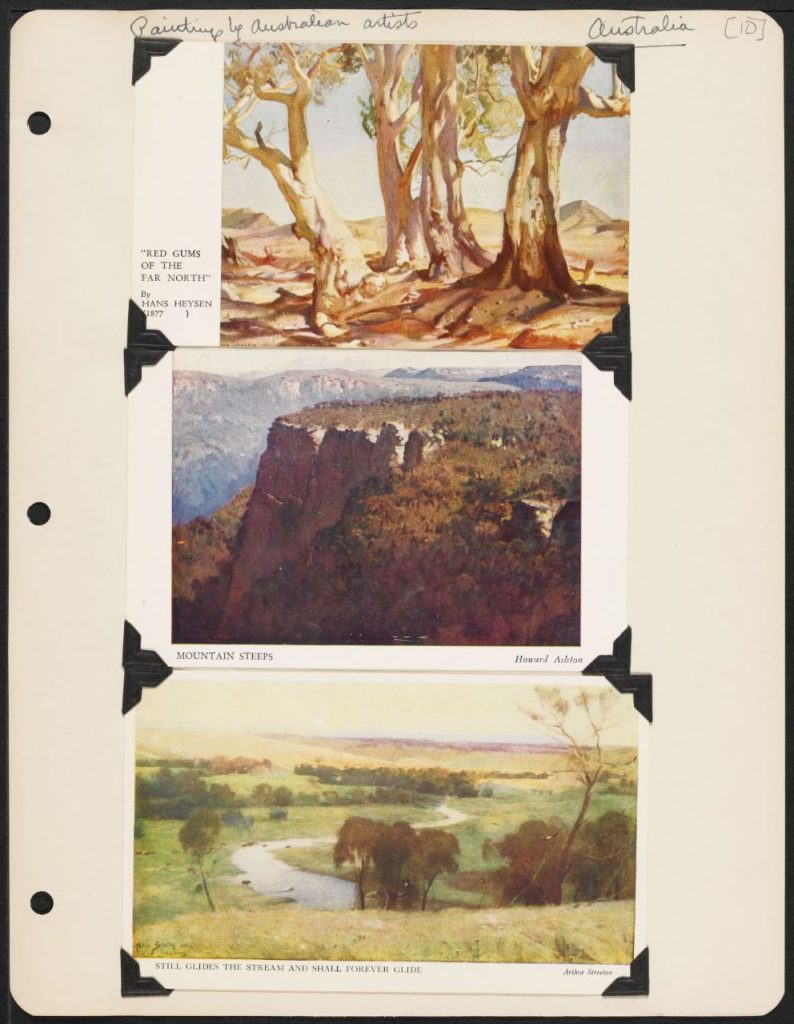
© The Schlesinger Library at the Radcliffe Institute for Advanced Study, Harvard University
Personal accounts
Ida Maude’s sister-in-law, Cornelia Cannon, was also a passionate traveler who would accompany her husband, Dr Walter B. Cannon, on speaking trips around the world. Typescripts describing two trips to Russia, one in 1936 and again in 1959, provide an insight into a country that many Americans could only dream of at the time. The first essay, ‘I was arrested in Russia’, is her account of being arrested in Leningrad, for illegally taking photographs of a former tsar’s house during her first journey to the country in 1936. Not only is this a fascinating account of her experience with the Russian secret police, but it also provides a fabulous description of a Trans-Siberian Railway trip. Here she discusses the the comparisons between Russia and her homeland of Massachusetts, and describes the conditions on the train: ‘…we were to travel “soft”, on the trans-Siberian train. It was only later that we learned how privileged we were, for traveling “hard” meant sleeping on wooden shelves in a car crowded with dozens of fellow passengers.’
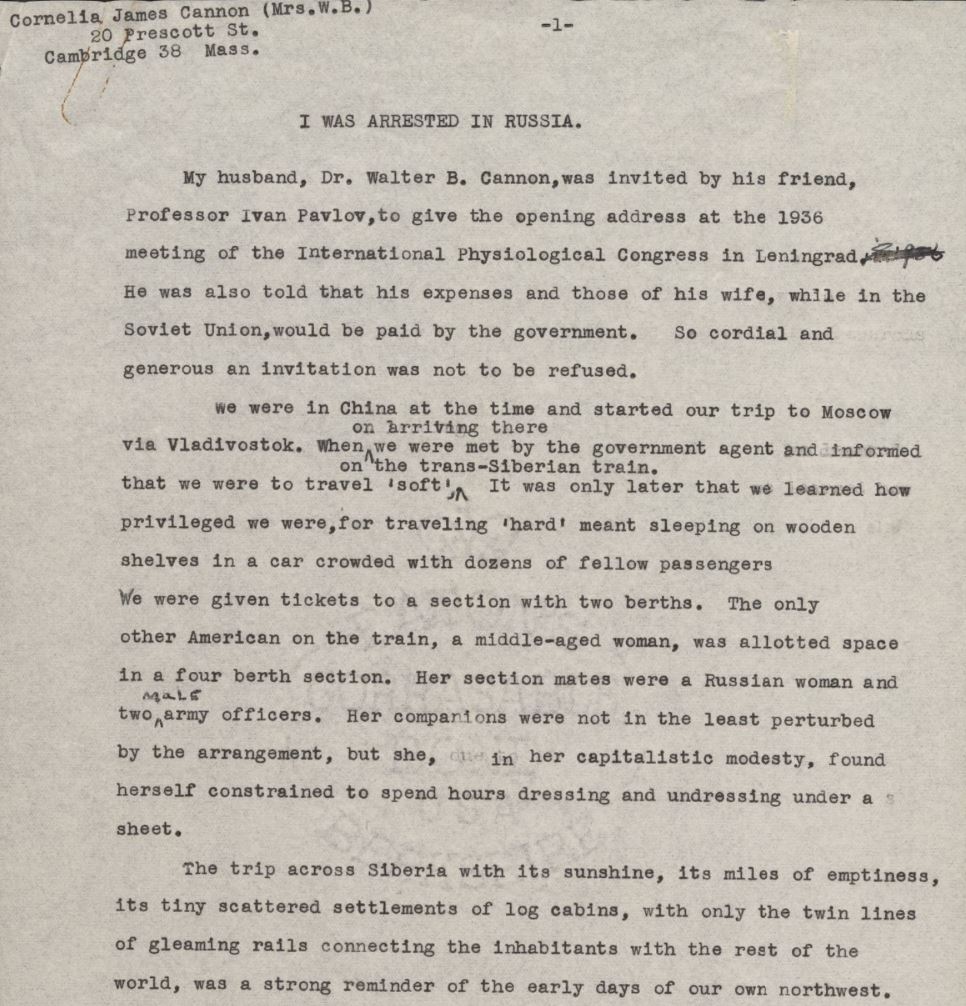
© The Schlesinger Library at the Radcliffe Institute for Advanced Study, Harvard University
Her second essay, ‘Russia Revisited’, contrasts her earlier experiences with her observations of the post-WWII country over 20 years later, and begins with the poignant reminder: ‘A tourist is one who travels to see things that are different, and then complains when they are not the same.’

© The Schlesinger Library at the Radcliffe Institute for Advanced Study, Harvard University
There is also a marvelous collection of photographs of some of the featured travellers, including Cornelia Cannon, Alice Northrop and Ida Pruitt amongs others:
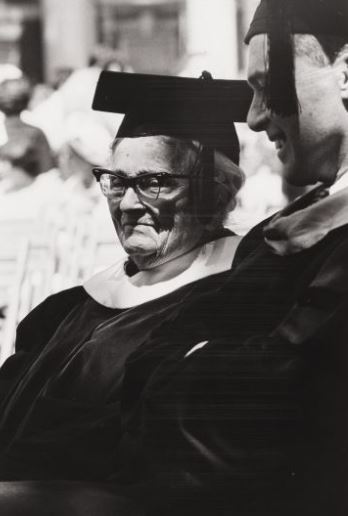
© The Schlesinger Library at the Radcliffe Institute for Advanced Study, Harvard University
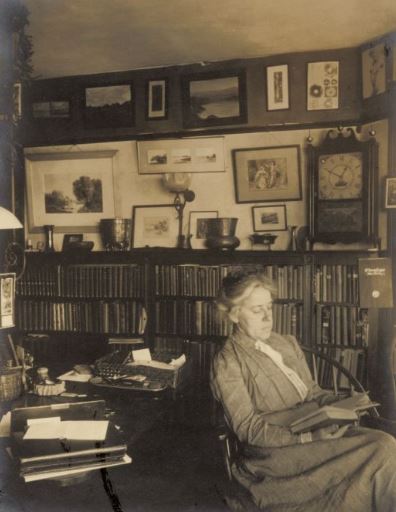
© The Schlesinger Library at the Radcliffe Institute for Advanced Study, Harvard University
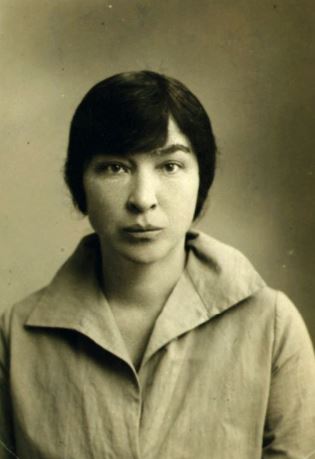
© The Schlesinger Library at the Radcliffe Institute for Advanced Study, Harvard University
Letters and postcards
Letters and cards sent home while on holiday can provide a candid insight into the thoughts of the traveller. During her time in Australia from 1957-1962, 65-year-old former business executive Lillian Schoedler speaks openly to friend Lura Beam back home in New York about her views of Melbourne and Sydney, and her dislike of ‘a dreadful write-up’ written about her in the Sydney Morning Herald. Melbourne, she says, is ‘quite like Boston in its feel’, and she enjoyed a ‘stunningly good lunch in the Dandenong Hills’; while Sydney is ‘much more like New York, in its hurried and sophisticated life’.
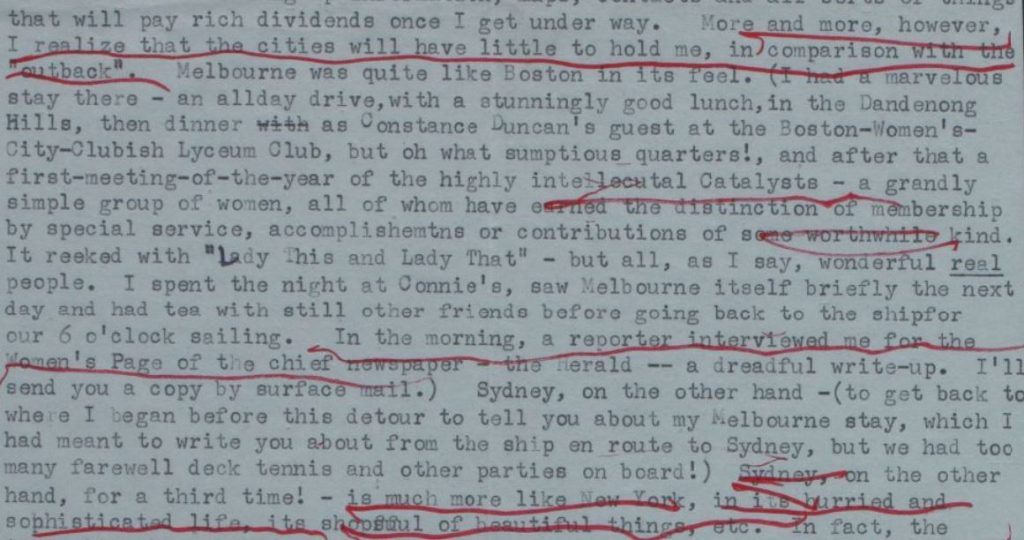
© The Schlesinger Library at the Radcliffe Institute for Advanced Study, Harvard University
Below we find a potentially odd choice of postcard subject: the Monarch Life Insurance Building, Massachusetts, sent by Lucille Rust to her daughter Louise from the Westover Air Base whilst en route to Germany in 1949.
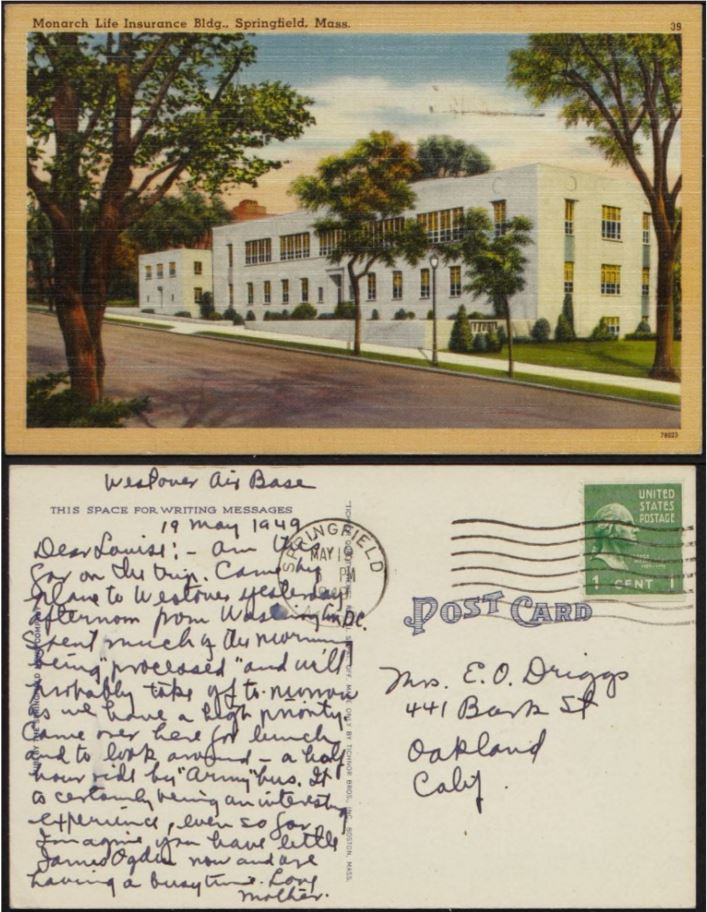
© The Schlesinger Library at the Radcliffe Institute for Advanced Study, Harvard University
It’s unclear who retired business woman and self-described ‘vagabond’, Lilian Schoedler, was sending this postcard to, but her love of the unspoiled scenery in Chile certainly comes across in her brief message.
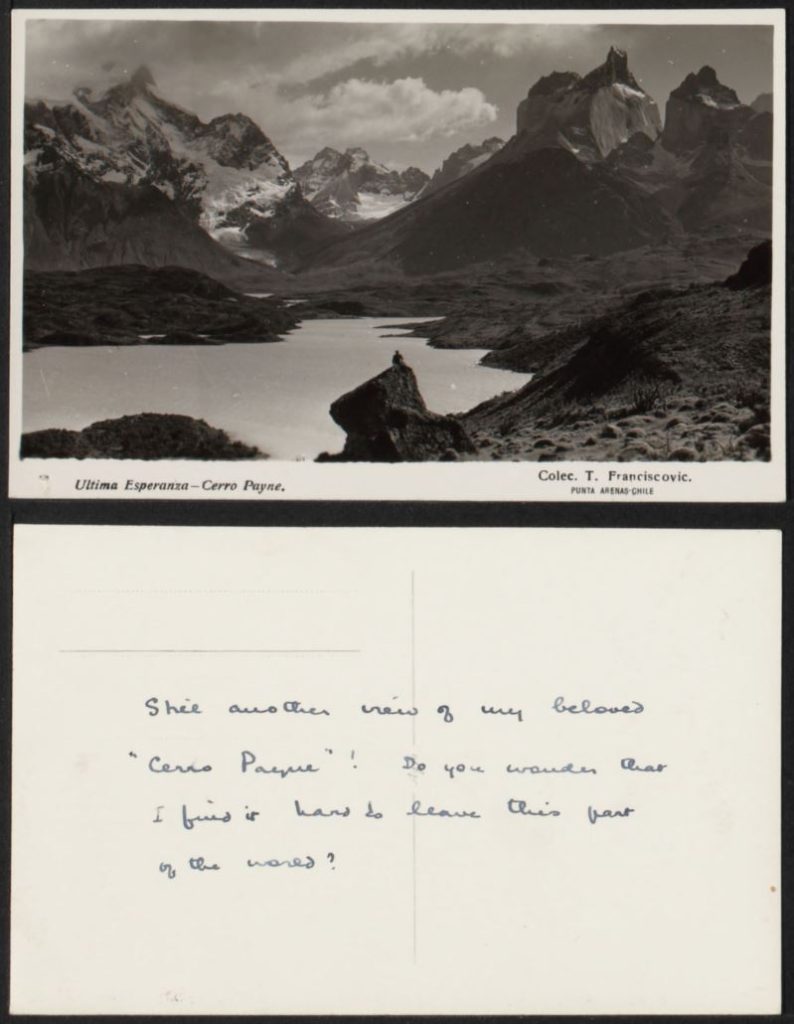
© The Schlesinger Library at the Radcliffe Institute for Advanced Study, Harvard University
Travel document and guides
Documents relating to travel have changed greatly over time. Below we have the 1927 United States of America passport of Richard Kitchelt, which includes passage for his wife Florence Ledyard Kitchelt (nee Cross) to accompany him to Europe.

© The Schlesinger Library at the Radcliffe Institute for Advanced Study, Harvard University
Reporter Catherine Coyne travelled extensively and kept journals, many of which included of-the-time travel advice in the front pages, aimed at first-time American travellers to Europe. Her 1967 diary provides information on the best time of day to shop, the customary tipping amounts and the expected dress code when travelling by first class ship.
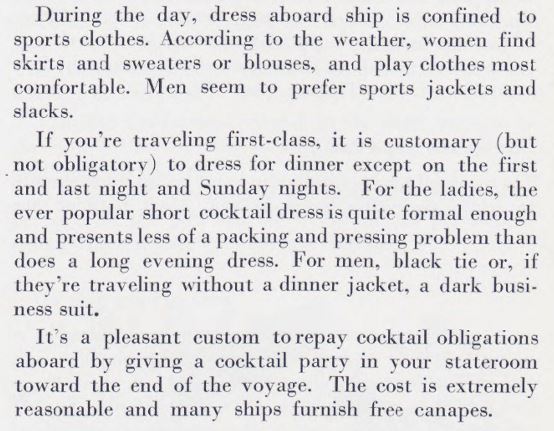
© The Schlesinger Library at the Radcliffe Institute for Advanced Study, Harvard University
Ephemeral items and tourist itineraries have made their way into many scrapbooks kept by the travellers in this database. Here we have a bright itinerary for approved tourist travel in the USSR in 1959.
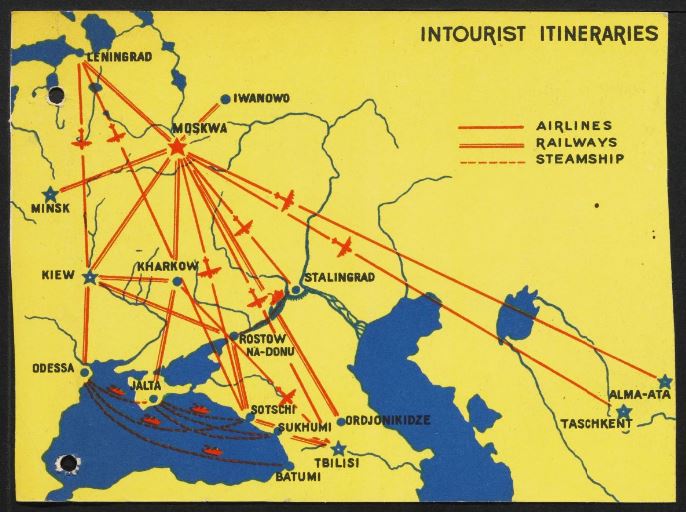
© The Schlesinger Library at the Radcliffe Institute for Advanced Study, Harvard University
We hope you enjoy exploring Travel Writing, Spectacle and World History!
We always welcome your recommendations for database trials – let us know what you’d like to see. Have a research query or questions on how to use our online collections? Ask a Librarian.
More to Explore
Check out our latest databases on trial, and see a full list of all new and trial databases, by visiting our A-Z Databases page, including a range of other databases focused on travel or women’s experiences.
Or, check out some more great stories from our Blog:

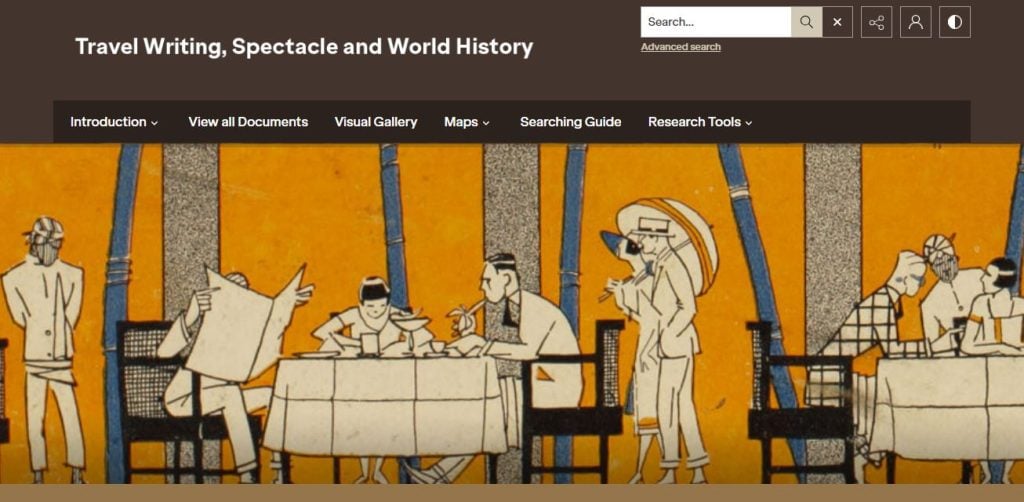
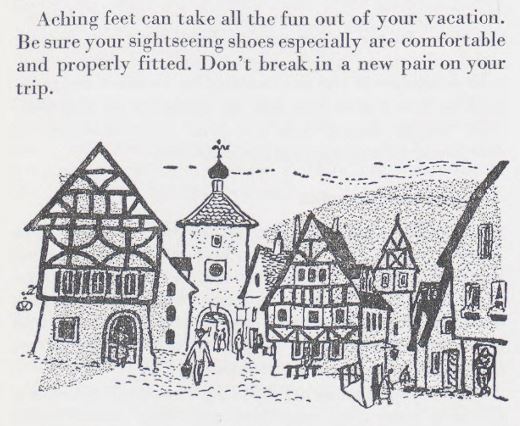

Very informative
I love seeing these travel stories from years ago. It was a different world then. Thank you.
Hi Rose – it really is a fabulous collection with a lot of incredible women’s stories! I’m glad you enjoyed the blog.
I really enjoyed your examples of Travel Writing: especially Lura Beam’s good lunch in the Dandenongs and her comparison of Melbourne with Boston. Gives interesting light upon the times and places.